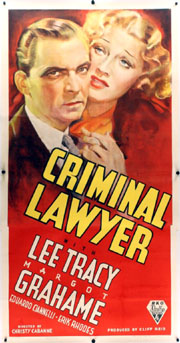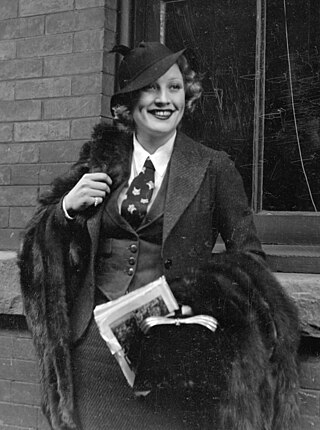
Margot Grahame was an English actress most noted for starring in The Informer (1935) and The Three Musketeers (1935). She started acting in 1930 and made her last screen appearance in 1958.

Dangerous Corner is a 1934 American mystery film directed by Phil Rosen, using a screenplay by Anne Morrison Chapin, Madeleine Ruthven, Ralph Berton, and Eugene Berton, which was based on a novel and play of the same name by J. B. Priestley. It starred Virginia Bruce, Conrad Nagel, and Melvyn Douglas.

The Arizonian is a 1935 American Western film directed by Charles Vidor and starring Richard Dix, Margot Grahame, Preston Foster, and Louis Calhern. The screenplay was by Dudley Nichols. The film was released by RKO Radio Pictures on June 28, 1935.

Freckles is a 1935 American drama film directed by Edward Killy and William Hamilton from a screenplay written by Dorothy Yost, adapted by Mary Mayes from Gene Stratton-Porter's 1904 novel of the same name. Two earlier adaptations of Stratton-Porter's novel had been produced, the first by Paramount in 1917, and the second in 1928 by FBO, both were also titled Freckles. This 1935 version was released by RKO Radio Pictures on October 4, and stars Tom Brown, Virginia Weidler, and Carol Stone.

The Farmer in the Dell is a 1936 American comedy film directed by Ben Holmes from a screenplay by Sam Mintz and John Grey, adapted from Phil Stong's 1935 novel, which was similarly titled, Farmer in the Dell. The film was premiered by RKO Radio Pictures in New York City on March 6, 1936, and released widely later that month on March 27. It stars Fred Stone, Jean Parker, and Esther Dale.
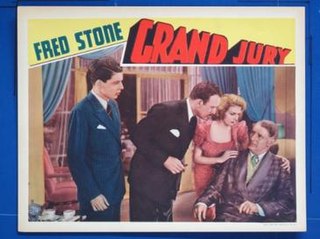
Grand Jury is a 1936 American crime drama film directed by Albert S. Rogell from a screenplay by Joseph A. Fields and Philip G. Epstein, based on a story by James Edward Grant and Thomas Lennon. Produced and distributed by RKO Radio Pictures, it premiered in New York City on July 31, 1936, and was released nationwide the following week on August 7. The film stars Fred Stone, Louise Latimer and Owen Davis, Jr.
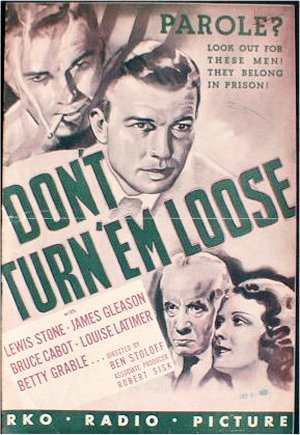
Don't Turn 'Em Loose is a 1936 American crime drama film directed by Ben Stoloff and produced by RKO Radio Pictures, who released the film on September 18, 1936. Written by Harry Segall and Ferdinand Reyher, the production's screenplay is at least partially based on "Homecoming" by Thomas Walsh, a short story published in Collier's magazine in March 1936. The film costars Lewis Stone, James Gleason, Bruce Cabot, Louise Latimer and Betty Grable.
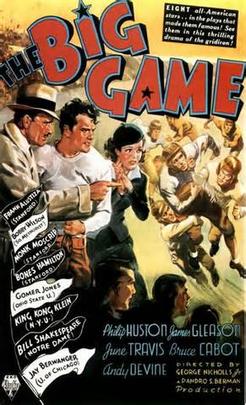
The Big Game is a 1936 American sports drama film directed by George Nicholls, Jr. and produced by RKO Radio Pictures, which released the film on October 9, 1936. The screenplay was written by Irwin Shaw, adapted from the 1936 novel of the same name by Francis Wallace. The film stars Philip Huston, James Gleason, June Travis, Bruce Cabot and Andy Devine. Huston (1908–1980) was a respected New York stage actor, who also had prominent roles in a number of motion pictures and, later, acted in television productions, as well.

Don't Tell the Wife is a 1937 American comedy film directed by Christy Cabanne using a screenplay by Nat Perrin adapted from the play, Once Over Lightly, written by George Holland. The film stars Guy Kibbee, Una Merkel, and Lynne Overman, with Lucille Ball, William Demarest, and Academy Award winner Hattie McDaniel in supporting roles. Produced by RKO Radio Pictures, it premiered in New York City on February 18, 1937, and was released nationwide on March 5.
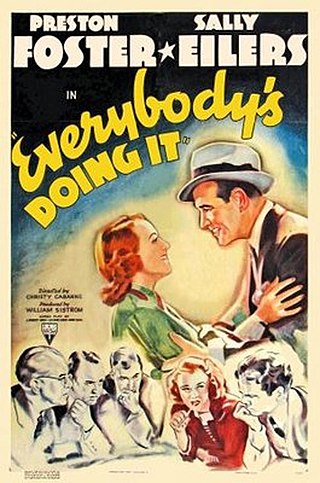
Everybody's Doing It is a 1938 American comedy film directed by Christy Cabanne using a screenplay by J. Robert Bren, Edmund Joseph, and Harry Segall, based on George Beck's story. RKO produced and distributed the film, releasing it on January 14, 1938. The movie stars Preston Foster and Sally Eilers.
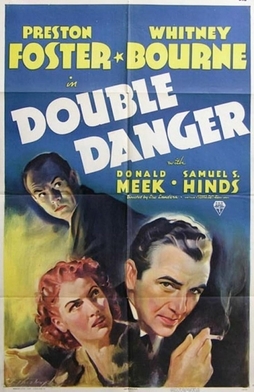
Double Danger is a 1938 American crime drama directed by Lew Landers, using a screenplay by Arthur T. Horman and J. Robert Bren based on Horman's story. The film stars Preston Foster and Whitney Bourne, with supporting roles by Donald Meek and Samuel S. Hinds. Produced by RKO Radio Pictures, it was released on January 28, 1938.

China Passage is a 1937 American mystery film directed by Edward Killy from a screenplay by Edmund L. Hartmann and J. Robert Bren, based on a story by Taylor Caven. RKO Radio Pictures produced the film, which stars Constance Worth, Vinton Haworth, Leslie Fenton and Gordon Jones. Haworth was injured in an automobile accident in January 1937, delaying the film's released until March 12, 1937.

Danger Patrol is a 1937 American drama film directed by Lew Landers from a screenplay by Sy Bartlett based on a story by Helen Vreeland and Hilda Vincent. Produced and distributed by RKO Radio Pictures, it was released on December 3, 1937, and stars Sally Eilers, John Beal, and Harry Carey.

Crime Ring is a 1938 American crime drama film directed by Leslie Goodwins from a screenplay by J. Robert Bren and Gladys Atwater, based on a story by Reginald Taviner. The film stars Allan Lane and Frances Mercer, and was produced and distributed by RKO Radio Pictures, released on July 8, 1938.
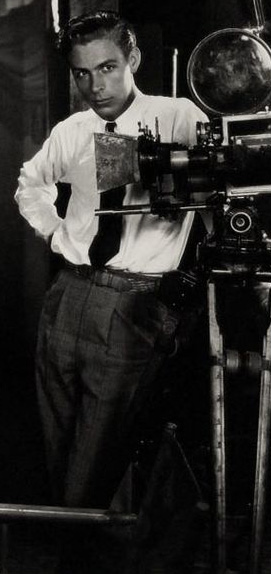
Edward Cronjager was an American cinematographer whose career spanned from the silent era through the 1950s. He came from a family of cinematographers, with his father, uncle, and brother all working in the film industry behind the camera. His work covered over 100 films and included projects on the small screen towards the end of his career. He filmed in black and white and color mediums, and his work received nominations for seven Academy Awards over three decades, although he never won the statue.
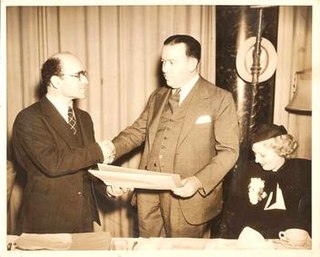
Cliff Reid, also known as George Clifford Reid, was an American film producer and film production studio founder during the 1930s and 1940s. In addition he also directed film shorts, and was the assistant director on several feature films.
Arthur T. Horman was an American screenwriter whose career spanned from the 1930s to the end of the 1950s. During that time he wrote the stories or screenplays for over 60 films, as well as writing several pieces for television during the 1950s.

Samuel J. Briskin was one of the foremost producers of Hollywood's Golden Age, and head of production during his career at three of the "Big 8" major film studios: Columbia Pictures (twice), Paramount Pictures, and RKO Pictures. In the late 1950s, he was briefly on the board of directors of another major, Metro-Goldwyn-Mayer. During World War II, Briskin served in the army's Signal Corps as a film producer, attaining the rank of lieutenant colonel. After the war he co-founded Liberty Films with Frank Capra. They were later joined by William Wyler and George Stevens. The studio only produced two films, but both are now considered classics: It's a Wonderful Life and State of the Union. All three of his brothers were also film producers, as well as one of his sons, and his sister was married to the eventual Chairman of Columbia, where Briskin spent the last decade of his life as a vice-president and head of production until his death in 1968 from a heart attack.
William Stack was an American actor who began his acting career in Great Britain. Over the course of his career he appeared in over 50 films in the United States and United Kingdom, including such notable films as Mary of Scotland, Captains Courageous, and Gone with the Wind.

Lee Marcus, also known as Lee S. Marcus, was an American film producer of the 1930s and 1940s. During his fifteen-year career he produced over 85 films, most of them between 1934 and 1941 while he was at RKO Studios. Prior to his production career, Marcus worked for FBO and then RKO as a sales executive, reaching the level of vice president in both organizations. At RKO, he was head of production of the studio's b-films during the late 1930s and the beginning of the 1940s. He was also responsible for producing what many consider to be the first film noir, 1940's Stranger on the Third Floor.
